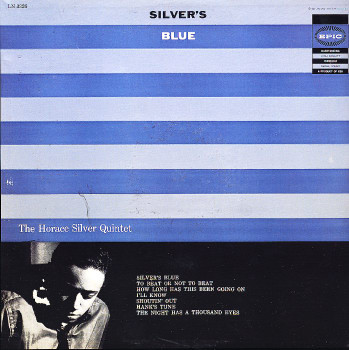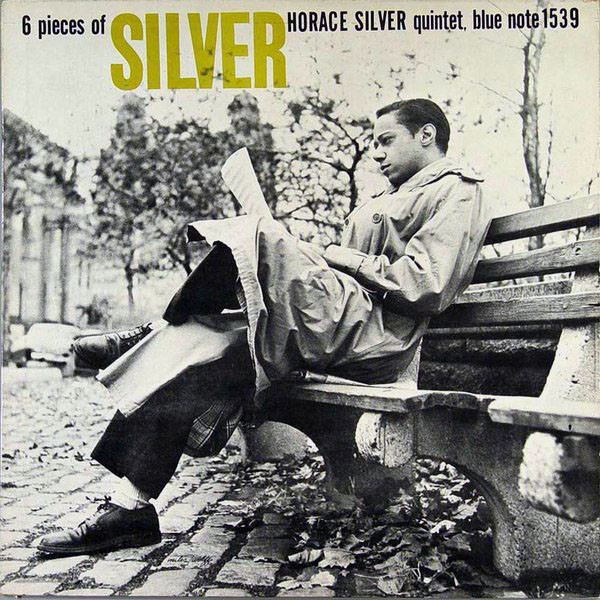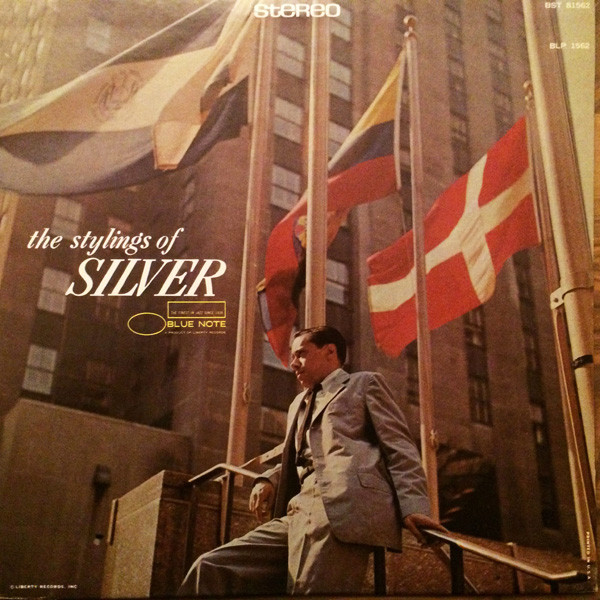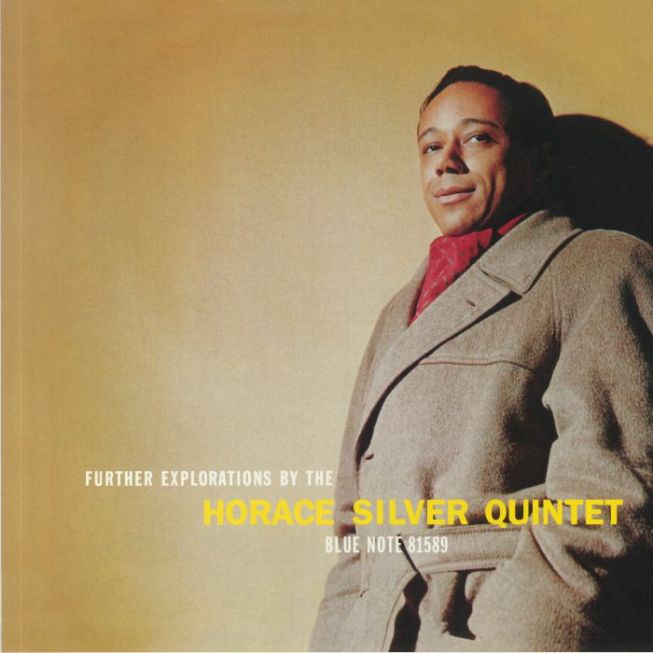CULT CLASSIC: HORACE SILVER QUINTET-FURTHER EXPLORATIONS BY THE HORACE SILVER QUINTET.
Cult Classic: Horace Silver Quintet-Further Explorations By The Horace Silver Quintet.
By 1950, composer and pianist Horace Silver was twenty-two and living in Hartford, Connecticut, where he had formed his own trio. They were already a familiar sight in the local clubs and are were quickly establishing a reputation as one of the up-and-coming jazz combos.
That was why when Stan Getz was booked to play in one of the clubs in Hartford, Horace Silver’s trio was booked to back him. The saxophonist was so impressed by the trio that he hired them to accompany him on tour. This was the big break that Horace Silver had been looking for.
The trio spent the rest of 1950 touring with Stan Getz, and in December he had a session booked to record a quartet album. This was Horace Silver’s recording debut but he wasn’t fazed and his career continued on an upward spiral. That was despite being replaced in Stan Getz’s group after a year.
Horace Silver moved to New York where he worked as a session musician. During this period, he established a reputation as a gifted composer and his bluesy piano playing was in demand. He worked with Lester Young, Coleman Hawkins and Lou Donaldson who he credited with helping develop his understanding of bebop.
In 1952, Lou Donaldson had signed to Blue Note Records and was about to record his debut album. It was a quartet recording at Van Gelder Studio that featured drummer Art Taylor, bassist Gene Ramey and Horace Silver. Little did he know how important a session this would be.
Later in 1952, Lou Donaldson was scheduled to record another quartet album for Blue Note Records. It was a slightly different lineup that made their way to the Van Gelder Studio. Art Taylor had been replaced by Art Blakey. However, someone else was missing…Lou Donaldson. The saxophonist had withdrawn from the session which presented a problem for Alfred Lion who had booked the studio. He offered Horace Silver the opportunity to record a trio album. History had just been made.
Horace Silver would go on to spend twenty-eight years with Blue Note Records. During this period, the bandleader recorded thirty-six studio albums and three live albums. This includes Further Explorations By The Horace Silver Quintet.
Having made his recording debut, Horace Silver divided his time between his nascent solo career and his work as a sideman. His services were in demand and in 1953 he played on sessions for albums by Sonny Stitt, Howard McGhee and Al Cohen. The following year, 1954, he worked with some of the biggest names in jazz including Art Farmer, Miles Davis and Milt Jackson. Horace Silver also won Down Beat critics’ new star award for piano players in 1954, and was a member of the Modern Jazz Quartet at the first ever Newport Jazz Festival when he stood in for John Lewis. The twenty-six year old had come a long way in a short space of time.
Whilst he was living in New York, Horace Silver cofounded the Jazz Messengers with Art Blakey. In late 1954 and early 1955 the nascent group recorded two ten inch albums under Horace Silver’s name. They were later repackaged and reissued as Horace Silver and The Jazz Messengers in October 1956. It featured The Preacher which gave Horace Silver his first hit single.
Horace Silver was also a member of the Art Blakey Quintet when they recorded A Night at Birdland Volume 1. It was originally released as a ten inch album in 1954 and repackaged and reissued in 1956. It’s regarded as an important album in the development of hard bop.
So were At The Cafe Bohemia, Volumes 1 and 2 which Horace Silver recorded during his time with The Jazz Messengers. These albums feature the original lineup of the group and nowadays, are regarded as jazz classics. However, by the time the albums were released in 1956, Horace Silver had left The Jazz Messengers.
The last time Horace Silver recorded with The Jazz Messengers was in May 1956. Later that year, he left the band. He had been a Jazz Messenger for eighteen months and recored several important and influential albums during that period. However, towards the end of his time with the band, some of the members were becoming increasingly reliant on heroin. This was something he didn’t approve of and wanted no part of, so he left The Jazz Messengers and formed the Horace Silver Quintet.
This made sense for Horace Silver. While he was still a Jazz Messenger he had been contacted by club owners who had heard his albums and wanted to book him. Joining him in the first lineup of the Horace Silver Quintet was drummer Louis Hayes, bassist Doug Watkins, trumpeter Art Farmer and tenor saxophonist Hank Mobley. However, the lineup was fluid and changed over the next few years.
Silver’s Blue.
By the time that Silver’s Blue was recorded on July the ‘2nd,’ ‘17th’ and ‘18th’ of July 1956 the group’s lineup had evolved. Only Hank Mobley and Doug Watkins reminded from the original lineup. During the three day session, they were joined by drummers Art Taylor and Kenny Clarke and trumpeters Joe Gordon and Donald Byrd. They recorded a total of seven tracks which were produced by Carl Lampley.
When Silver’s Blue was eventually released in August 1957 and was an innovative album of funky jazz. It was an album that was ahead of its time which the critics didn’t understand. They gave the album mixed reviews and it was only much later that the album’s importance was recognised.
6 Pieces Of Silver.
Three months after the Silver’s Blue session, the Quintet made their way to Van Gender Studio on November the ‘10th’ 1956. The lineup was drummer Louis Hayes, bassist Doug Watkins, tenor saxophonist Hank Mobley and trumpeter Donald Byrd who played on five of the seven tracks. This was essentially the previous year’s lineup of The Jazz Messengers. This multitalented and versatile combo were joined by engineer Rudy Van Gelder and producer Alfred Lion. During the session, the Quintet continued to develop their sound and recorded a track that launched Horace Silver’s career.
This was the Horace Silver composition Señor Blues which went on to become a jazz standard. He also went on to write lyrics which were recorded for the first time in 1958 by the Quintet with vocalist Bill Henderson. However, when 6 Pieces Of Silver was released in January 1957 it was to critical widespread critical acclaim. This time, the Horace Silver Quintet had over critics with an album of hard bop. It was the start of a fruitful period for Horace Silver.
The Stylings Of Silver.
On May the ‘8th’ 1957 the Horace Silver Quintet journeyed to Van Gelder Studio to record what would become The Stylings of Silver. By then, the Quintet and their charismatic leader were a crowd pleasing combo who were already a popular draw in jazz. No wonder with such a talented lineup.
Horace Silver was joined by drummer Louis Hayes, bassist Teddy Kotick, tenor saxophonist Hank Mobley and trumpeter Art Farmer. Five of the six tracks were written by Horace Silver with My One and Only Love the only cover version. Just like the scions for 6 Pieces Of Silver, it was engineered by Rudy Van Gelder and produced by Alfred Lion.
When The Stylings Of Silver was released later in 1957, this album of swinging hard bop was well received by critics. It was a consistent and enjoyable album of finger popping and toe tapping hard hop that showcased Horace Silver’s skills as a composer, bandleader and pianist. He and his Quintet were going from strength-to-strength.
Further Explorations By The Horace Silver Quintet.
Another eight month passed before the Horace Silver Quintet returned to Van Gelder Studio on January the ’13th 1958. By then, Horace Silver was a successful bandleader and composer and was no longer working as a sideman. This was unusual as many successful jazz musicians still worked as sidemen. It was another source of income and allowed them to keep up with new developments in jazz. That was something that Horace Silver did throughout his career as his music evolved and he recorded everything from bebop and hard bop to soul-jazz and fusion.
When he recorded Further Explorations By The Horace Silver Quintet he was joined by drummer Louis Hayes, bassist Teddy Kotick, tenor saxophonist Clifford Jordan and trumpeter Art Farmer. Alfred Lion took charge of production and Rudy Van Gelder engineered the album which eventually feathered six tracks.
This included five Horace Silver compositions, The Outlaw, Melancholy Mood, Pyramid, Moon Rays and Safari which had been released as Horace Silver’s debut single in 1952. They were joined by a cover Harold Arlen and Ted Koehler’s Ill Wind on Further Explorations By The Horace Silver Quintet.
Two months after the recording session, Blue Note Records released Further Explorations By The Horace Silver Quintet was released in March 1958. The reviews of the album were positive with critics won over by another substantial and impressive album of hard bop that revealed the considerable talents and versatility of the Quintet. While the album was slightly more restrained than previous albums it had one thing in common…quality.
Side One.
Further Explorations By The Horace Silver Quintet featured a band that was firing on all cylinders from the opening bars of The Outlaw. The rhythm section power the arrangement along, and it sashays along fusing elements of reggae and bebop. Meanwhile, the horns are to the fore and play a starring role. Horace Silver is no slouch and gives an impressive performance during the solos and as he leads the Quintet on this irresistible future hard bop classic.
Very different is Melancholy Mood a much more understated and quite beautiful piano-led track which allows time to reflect and contemplate.
There’s a degree of urgency as the horns unite and open Pyramid. They’re joined by stabs of dramatic piano before the arrangement unfolds and there’s a fluidity to the trumpet and then the sultry tenor saxophone as they soar above the arrangement. Meanwhile, drummer Louis Hayes and Horace Silver piano play with freedom. He goes from jabbing and stabbing the piano to adding a slinky accompaniment before his fingers dance across the keyboard during a fleet fingered solo. He’s then joined by the horns and they reunite and play a starring role as he once again jabs and stabs his keyboard before the this Horace Silver composition reaches a crescendo and closes side one.
Side Two.
Initially, Moon Ray is slow and mournful and at times dramatic as it unfolds. Partly this is because of the horns which add a mournful sound while the drums and piano add a degree of drama. Soon, it’s all change as the Quintet kick loose and it’s as if the sun has come out after a thunderstorm as the horn carries the melody. Clifford Jordan sounds as if he’s enjoying himself before the baton passes to Art Farmer who unleashes one of his best solos. So does Horace Silver whose fingers effortlessly glide across the keyboard playing with speed on accuracy before he’s joined by the rest of band. By now, the joyous sounding arrangement is swinging. That’s until the last minute as the tempo drops but the quality remind on a track that would become a Horace Silver classic.
Safari bursts into life as scrabbling horns inject urgency as drums pound, hi-hats hiss and the piano punctuate the arrangement. The quintet is like a boy racer as they go from nought to 100 in the blink of an eye. It’s a case of sit back and enjoy the ride as play with urgency and invention on a track that epitomises everything that’s good about hard bop circa 1958.
Closing Further Explorations By The Horace Silver Quintet is a cover of the standard Ill Wind. The tempo drops and straight away, the arrangement seems to hark back to earlier era. The melancholy horns are to the fore with the piano playing a supporting role Drummer Louis Hayes adds occasional bursts of drama and with bassist Teddy Kotick drives the arrangement along. Meanwhile, Horace Silver showcases his versatility his piano stuttering before becoming slinky and fluid. He then joins the sultry, late night horns as the Quintet take their leave and close the album with a truly memorable track.
When Further Explorations By The Horace Silver Quintet was i n March 1958, it was well received by critics. However, the album was never regarded as one of the Quintet’s classic. By then, they had released their first classic, 6 Pieces of Silver. Over the next few years, the Quintet would release Blowin’ The Blues Away, The Tokyo Blues, Silver’s Serenade and Song For My Father which nowadays are regarded as jazz classics.
Meanwhile, Further Explorations By The Horace Silver Quintet has been reevaluate by critic and while it’s not regarded as a classic it’s an oft-overlooked and underrated album. There’s not a weak track on the album where the Quintet are firing on all cylinders as they showcase their talent and versatility. This includes tenor saxophonist Clifford Jordan whose playing was sometimes underrated. He plays a starring role on Further Explorations By The Horace Silver Quintet where he joins forces with Art Farmer to create a potent front line. They’re part of a Quintet where there’s no weak links. The result is a stunning, soulful and swinging album of hard bop that for too long was overlooked and underrated, but thankfully that’s no longer the case with Further Explorations By The Horace Silver Quintet.
Cult Classic: Horace Silver Quintet-Further Explorations By The Horace Silver Quintet.
- Posted in: Bebop ♦ Hard Bop ♦ Jazz
- Tagged: 6 Pieces Of Silver, Alfred Lion, Art Farmer, Blue Note Records, Clifford Jordan, Further Explorations By The Horace Silver Quintet, Horace Silver, Horace Silver Quintet, Louis Hayes, Rudy Van Gelder, Silver's Blue, Teddy Kotick, The Jazz Messengers, The Stylings Of Silver, Van Gelder Studio



